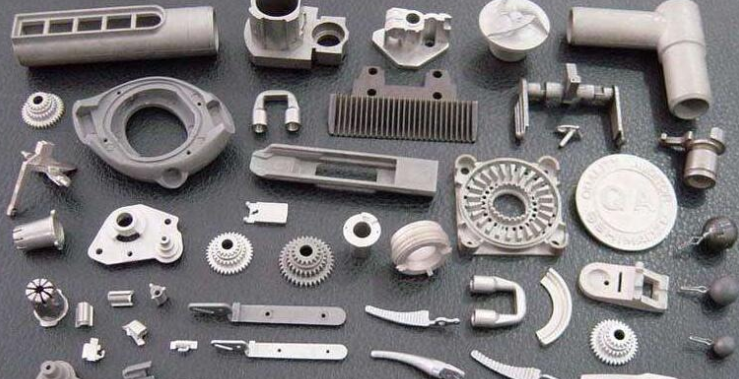Metal powder injection molding (MIM) is a kind of molding processing method which injects the plasticized mixture obtained by mixing binder and metal powder into a specific mold. It is a new metal injection molding technology developed by combining powder metallurgy and polymer injection molding. It is especially suitable for mass production of small, complex and large amount of metal products, especially for precision metal parts with complex structure, small volume and special requirements, which are difficult to be processed by traditional processing methods and have high processing cost. Metal powder injection molding can reduce the processing cost. This article explained what causes defects in metal powder injection molding, as well as how to prevent them.

Causes & Solutions Of Common Defects In Metal Powder Injection Molding (MIM)
The production process of metal powder injection molding (MIM) products is: powder + binder → mixing → granulation → injection molding → degreasing (MIM degreasing furnace) → sintering (MIM sintering furnace) → subsequent treatment → forming products. In the production process of MIM cemented carbide parts, improper material selection and operation control in any link may cause defects in cemented carbide part.
How To Avoid Defects Of Metal Powder Injection Molding?
1. Powder selection
MIM cemented carbide powder metallurgy should not only meet the basic requirements of particle size distribution, particle size and so on, but also require high purity of the powder. The powder with impurities can not be selected. If the powder contains sulfur, phosphorus, silicon and other elements, these substances will form pores in the sintering process, resulting in product defects.
2. The production of feed
When mixing cemented carbide powder, appropriate binder is needed. When mixing, cemented carbide powder and binder should be fully mixed. The temperature must be strictly controlled in the mixing process to avoid volatilization and uneven distribution of binder, so that the mixture can have good rheological properties and viscosity value after being made into feed, and avoid defects in the later links.
3. Forming green parts
This is also a key link in the production of cemented carbide parts. To avoid product defects, we need to pay attention to the reasonable control of mold temperature, feeding amount, injection pressure, holding pressure, holding time and injection speed in the injection process, which can effectively avoid the defects of green injection.
4. Degreasing process
In the degreasing process of cemented carbide green body, if the temperature rising speed of degreasing furnace is too fast, the crack defects of cemented carbide parts will be caused, so the degreasing can be carried out step by step.
5. Sintering process
The density of cemented carbide is high, and the products are easy to deform due to its own gravity during liquid phase sintering. Suitable supporting devices can be used. For larger products, materials with similar shrinkage can be selected as supporting plates. In addition, the time of liquid phase sintering should be shortened as much as possible.
What Are Common Defects Of Metal Powder Injection Molding
1. Understatement
Under injection refers to the incompleteness of injection products caused by insufficient pressure of injection molding machine or poor fluidity of injection materials. The causes of under injection are poor material fluidity, too small product wall thickness, too low mold temperature and too short injection time, which can be solved by improving material fluidity or replacing materials, increasing wall thickness, increasing mold temperature, increasing injection pressure and prolonging injection time.
2. Weld marks
During the injection process, the material is divided into several streams in the cavity and then converges together. There may be linear traces at the confluence, that is, weld marks, which affect the appearance quality and even mechanical strength of the product. The causes of weld line formation are too low injection pressure, too slow injection speed, too low material temperature and mold temperature, and too many strands of material flow. Therefore, measures such as increasing injection pressure, accelerating injection speed, increasing material temperature and mold temperature, and appropriately reducing shunt can be taken to solve the problems.
3. Cavitation
In the process of injection, the air in the mold cavity can not be discharged before it is packed with materials or compressed to the inner wall of the mold to form cavitation, which leads to under injection on the surface of the product and affects the appearance quality and even mechanical strength of the product. The main causes of cavitation are poor exhaust, improper gate position, too fast injection speed and too large thickness change of products. Measures such as adding exhaust holes or deepening exhaust holes, changing gate position, appropriately slowing down injection speed, prolonging holding time and avoiding sharp thickness change of products can be taken to solve the problems.
4. Deformation
Deformation refers to the bending or distortion of the formed products after cooling, which directly affects the appearance and dimensional accuracy of the products, and even causes the products to be scrapped. The causes of deformation are uneven cooling, too hot and too early jacking, too thin and unreasonable structure, and residual stress inside the product. The corresponding measures can be taken to solve the problems, such as uniform cooling of mold water channel, extending holding time and timely jacking out the product, improving the wall thickness and structure design of the product, and improving the forming conditions.
Metal powder injection molding (MIM) can form cemented carbide products with complex shapes. With the solution of defect control and the gradual improvement of MIM technology, the application scope of cemented carbide is gradually expanded, which greatly promotes the development of the whole cemented carbide industry.
When mixing cemented carbide powder, appropriate binder is needed. When mixing, cemented carbide powder and binder should be fully mixed. The temperature must be strictly controlled in the mixing process to avoid volatilization and uneven distribution of binder, so that the mixture can have good rheological properties and viscosity value after being made into feed, and avoid defects in the later links.